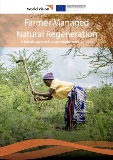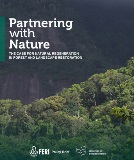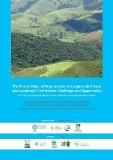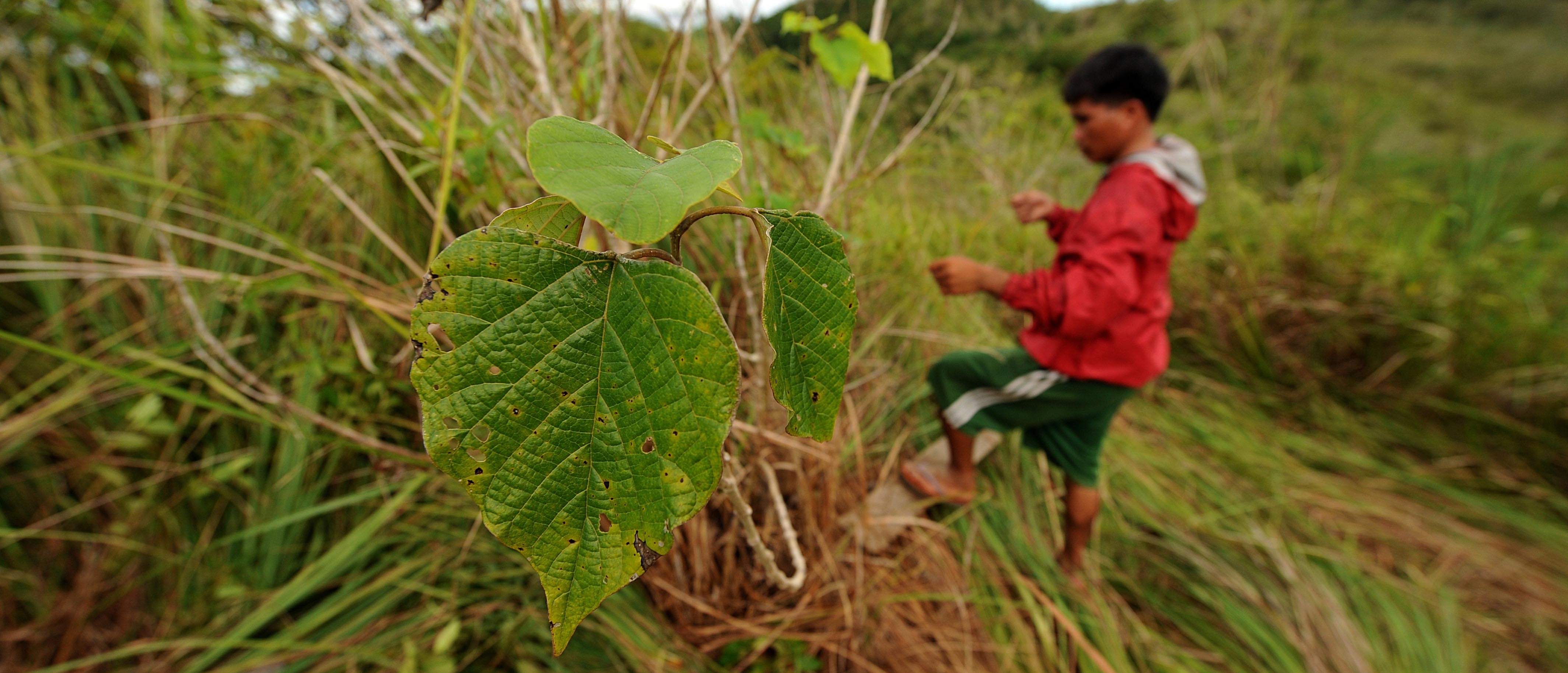
Assisted natural regeneration
What is ANR
Assisted natural regeneration (ANR) is a cost-effective restoration method that enhances productivity and ecosystem functions of degraded lands by facilitating natural successional processes. ANR involves interventions to overcome barriers to natural regeneration such as soil degradation and competition with weedy species. It is a growing field in restoration science with successful applications globally, offering a range of interventions to achieve various restoration goals and policy objectives.
Advantages:
- Low infrastructure and capital investment: ANR requires minimal infrastructure and capital investment, making it suitable for household, farm, and community-based restoration activities.
- Lower costs of implementation and maintenance: ANR is significantly cheaper to implement and maintain compared to full tree planting, which contributes to its effectiveness for household and community-based restoration.
- Natural successional process: ANR takes advantage of a natural successional process, ensuring that the plant community established is well adapted to site conditions, resulting in more diverse and multilayered vegetation.
- Enhanced habitat quality and environmental stability: The naturally regenerating plant community in ANR typically comprises a mixture of native species, enhancing habitat quality for local wildlife and environmental stability.
Limitations:
- Effectiveness dependent on site conditions: ANR is most effective where natural regenerants are present at sufficiently high densities or when there is an adequate input of seeds from surrounding forest areas.
- Variable tree growth and stand development: Compared to conventional reforestation through planting, tree growth and stand development are more variable in ANR, resulting in less uniform and unpredictable commercial yields of timber and fibre.
- Labor-intensive in early stages: ANR can be labour-intensive in early stages, particularly where naturally regenerating trees face heavy competition from weeds and grasses.
- Poor understanding among policy makers: ANR is not well understood or advocated by policy makers who are focused on active tree planting approaches to reforestation.
Despite these limitations, ANR can be a valuable approach to forest restoration. It can be combined with enrichment planting of ecologically and/or economically valuable species to meet the specific restoration objectives. It can also be used to restore land fertility to establish an agroforest. The various restoration options available should be combined at the landscape level to balance and optimize the different land management objectives for the wider landscape.
The successful implementation of ANR for forest restoration hinges on identifying areas conducive to this strategy from both social and ecological perspectives. Favourable conditions for forest restoration through natural regeneration include:
- Adequate density of naturally regenerating tree seedlings;
- Availability of seed inputs from nearby forest patches or the soil seed bank;
- Prevention of human-induced disturbances like fire, grazing, and unsustainable harvesting;
- Social support with incentives and long-term benefits for local communities;
- Shared vision among stakeholders on restoration objectives and clear land tenure;
- Low to moderate opportunity costs from other land uses;
- Favourable policy and regulatory environment; and
- Capacity, technical knowledge, and support within local governments or civil society organizations.
ANR is a versatile approach that can be tailored to various ecological, environmental, and socio-economic contexts. Key modalities of ANR include:
- ANR for transforming degraded shrub/grasslands to regenerating forests: Involves grass pressing, liberating desired tree seedlings, controlling disturbances, and enriching planting of economically or ecologically valuable tree species.
- ANR as part of forest management: Integrating ANR into forest management practices to enhance ecological and commercial value through thinning, invasive species control, enrichment planting, and disturbance prevention.
- ANR as part of agriculture: Utilizing ANR to boost agricultural yield and as a component of agrosilvopastoral systems, such as farmer-managed natural regeneration (FMNR), which has shown success in Africa by increasing crop production, addressing fuelwood shortages, and improving livestock survival rates during dry periods. Additionally, regenerated native trees and shrubs provide habitat and food for wildlife, as well as access to wild foods and medicinal plants for local communities.
Decision tree to help determine when to use natural regeneration or assisted natural regeneration versus conventional restoration

The following basic procedures are applied in restoring forests through ANR:
- Marking regenerants
- Liberating regenerants
- Suppressing grass
- Controlling disturbances
- Enrichment planting
- Maintenance and protection
These steps are described in detail in FAO’s ANR manual available on the right column.
In addition, experience has shown that developing sustained social support for ANR is critical in ensuring the success and long-term sustainability of restoration efforts. It is essential that the communities living near the restoration area understand and appreciate the value of forest restoration, are involved in the planning and implementation of ANR activities, and are incentivized and receive benefits from the restoration activities (e.g. employment, forest products, ecosystem services, etc.).
FAO has been promoting the application of ANR for forest restoration for over 20 years, starting with efforts to raise awareness on ANR in Asia through demonstration plots, study tours and technology transfer.
In 2005, FAO developed a Technical Cooperation Programme (TCP) project in the Philippines to catalyse extensive application of ANR in forest rehabilitation programmes in the country. This was followed by two phases of regional TCP projects to further upscale ANR application in Southeast Asia. FAO has also organized workshops to better understand the challenges and opportunities of natural forest regeneration and to facilitate its inclusion as a major component of large-scale restoration initiatives (e.g. regional workshops, 2014 in Brazil and 2017 in China).
In recent years, FAO has been actively promoting the application of ANR through a number of projects or programmes, including the following:
- Improving livelihoods through the restoration of Chilgoza Pine in Pakistan as part of The Restoration Initiative (TRI)
- Strengthening the Adaptive Capacity and Resilience of Rural Communities Using Micro Watershed Approaches to Climate Change and Variability to Attain Sustainable Food Security
- Dryland Sustainable Landscape Impact Program (FAO-GEF)
- The Forest and Landscape Restoration Mechanism
- Action Against Desertification
Relevant links
- Assisted Natural Regeneration Alliance
- Dryland Forestry
- Sustainable Forest Management
- The Forest and Landscape Restoration Mechanism
Resources
Contact
Kenichi Shono
Forestry Officer
Biodiversity and restoration
[email protected]
Publications
Further reading
Natural regeneration as a tool for large-scale forest restoration in the tropics: prospects and challenges.
Biotropica 48(6): 716-730.
The article focuses on the conditions that favor natural regeneration within tropical forest landscapes. It illustrates cases where large-scale natural regeneration followed forest clearing and non-forest land use, and describe the social and ecological factors that drove these local forest transitions.
Chazdon, R.L., Lindenmayer, D., Guariguata, M.R., Crouzeilles, R., Rey Benayas, J.M. & Lazos, E. 2020.
Fostering natural forest regeneration on former agricultural land through economic and policy interventions.
Environmental Research Letters 15(4): 043002.
Under suitable conditions, deforested land used for agricultural crops or pastures can revert to forest through the assisted or unassisted process of natural regeneration. These naturally regenerating forests conserve biodiversity, provide a wide array of ecosystem goods and services, and support rural economies and livelihoods.Crouzeilles, R., Beyer, H. L., Monteiro, L. M., Feltran-Barbieri, R., Pessôa, A. C. M., Barros, F. S. M., Lindenmayer, D. B., Lino, E. D. S. M., Grelle, C. E. V., & Chazdon, R. L. 2020.
Achieving cost-effective landscape-scale forest restoration through targeted natural regeneration.
Conservation Letters, 13(3), e12709.
High costs of tree planting are a barrier to meeting global forest restoration targets. Natural forest regeneration is more cost-effective than tree planting, but its potential to foster restoration at scale is poorly understood. We predict, map, and quantify natural regeneration potential within 75.5 M ha of deforested lands in the Brazilian Atlantic Forest.Shono, K., R. Chazdon, B. Bodin, S. J. Wilson, & Durst, P.B. 2020.
Assisted natural regeneration: harnessing nature for restoration.
Unasylva 252 71:71-81.
This Unasylva issue aims at showcasing forest and landscape restoration (FLR) opportunities and recent developments that have the power to upscale restoration, in order to achieving the Bonn Challenge pledge and other national and international commitmentsShono, K., Cadaweng, E.A. & Durst, P.B. 2007.
Application of assisted natural regeneration to restore degraded tropical forestlands.
Restoration Ecology 15(4): 620-626
Assisted natural regeneration (ANR) is a simple, low-cost forest restoration method that can effectively convert deforested lands of degraded vegetation to more productive forests. The method aims to accelerate, rather than replace, natural successional processes by removing or reducing barriers to natural forest regeneration.



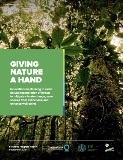
-manual.tmb-th600x450.jpg?Culture=en&sfvrsn=ef4ca7d9_1)
.tmb-th600x450.jpg?Culture=en&sfvrsn=616183f3_1)
